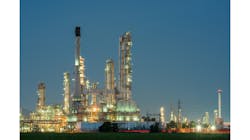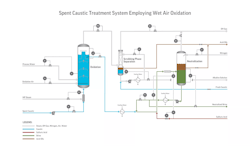ESG and beneficial reuse in the oil and gas industry
For more than a century, the oil and gas industry has provided crucial and sustained contributions to the global economy and enriched the lives of people around the world. More people today have access to abundant, affordable and reliable energy sources than ever before. For undeveloped countries, it has nobly lifted people out of poverty and enabled them to enjoy the essentials of modern life that developed countries take for granted.
Over the last 50 years, the industry has faced a reputation crisis across multiple stakeholders. With heightened awareness of the detrimental effects of environmental pollution, its gifts to the world of ample, reliable and affordable supply no longer meet society’s expectations. The industry is being held accountable for its impact on the environment and safety more than ever in history, making environmental, social and governance (ESG) initiatives far more than an ethical imperative. They are an absolute necessity.
In an industry that is not inherently sustainable, there is an impetus to reimagine waste. If initiatives are not already in place, the current post-pandemic period is a perfect opportunity for companies to permanently improve their commitment to the environment and society. Some believe there have been negligible solutions for how oil and gas practices can be greener, particularly in the refinery processes. For this reason, ESG has conceded to a reputation as difficult to implement and a profit-killer. In reality, the opposite is true. The right solutions can have a positive and profitable effect across the entire spectrum of the oil and gas industry.
Spent caustics
In the refinery process, sodium hydroxide — an aqueous caustic solution — removes impurities like sulfur compounds and carbon dioxide from various liquid streams. The discharged solutions, which generally include sodium or potassium hydroxide, water and contaminants that consume sodium and potassium hydroxide, are highly contaminated waste products that contain sulfide minerals, carbonates, residual caustic, pH, salinity and in many cases, heavy organic substances.
In midstream, mercaptans and H2S naturally occur in crude oil and natural gas and are also produced by the microbial breakdown of organic materials. The various hydrocarbons, fluids and contaminants are separated from streams.
In chemical plants, perchloroethylene (PERC), also known as tetrachloroethylene, is used to develop other products, including degreasers for automotive and metallurgical industries and in the production of stain removers, degreasers, paint strippers, glues, sealants, polishes and lubricants. It is a colorless reproductive liquid toxicant, neurotoxicant, carcinogen and a persistent environmental pollutant.
Waste not, want not
Due to the chemical characteristics and composition of spent caustics, they are not easily biodegradable, nor are they easily treatable by common chemical oxidants. Before being regulated, depleted brine wastewater was released to sewers, electrochemical sludge was transferred to waste barrels for disposal, waste minerals went into landfills and CO2 was emitted into the atmosphere.
In 1997, the U.S. Environmental Protection Agency (EPA) categorized spent caustics as hazardous and deleterious waste and required their safe removal and disposal. The most common disposal method today is to manifest spent caustics as hazardous waste. However, the economical and environmentally friendly choice for handling spent caustics is beneficial reuse.
Spent caustics can be beneficially reused, without reclamation or manifesting as hazardous waste, in industrial processes as substitutes for commercial products. This eliminates the disposal of materials as waste. As such, the materials are no longer a part of a company’s waste generation statistics or reporting. Under the EPA’s guidance on beneficial reuse, waste becomes valuable commodities exempt from solid waste definitions. Coined by the EPA, beneficial reuse fits within the Guiding Principles of the American Chemistry Council’s Responsible Care initiative.
While still regulated, the industry embraced sulfur removal, caustic treatments, spent caustic treatment technologies and caustic services for sulfidics, naphthenics, spent potassium hydroxide (KOH), disulfide oils (DSO), off-spec hydrocarbons and off-spec sodium hydroxide.
Onsite alternatives to beneficial reuse
There are treatment technologies that regenerate the mercaptide-rich caustic that is purged, returning a lean caustic stream for additional mercaptan removal. Gravity separation and/or solvent washing may be employed to minimize the impact of DSO back extraction, depending on the stringency of the treated product specifications. This type of technology is ideal for high-sulfur coker LPG streams and LPG products requiring <5 wppm total sulfur. The mercaptide-rich caustic is regenerated and returns a lean caustic with minimal DSO content that requires minimal DSO back-extraction into the LPG and ultra-low sulfur levels in the treated product.
Another on-site treatment technology can process spent caustics for BOD/COD reduction, odor control and/or pH adjustment. It employs either oxidation or acidification along with the option of final neutralization to yield a neutral brine effluent stream acceptable for disposal in wastewater treatment facilities, evaporation ponds or waterways.
Beneficial reuse or reduction of caustic wastes is but one piece of the environmental pie, but it is a substantial one that can be addressed immediately with significant impact.
Engaging with the societal component
While oil and gas companies examine and modify their environmental footprint, the social aspect of ESG cannot be overlooked. To lift negative connotations, the industry must better articulate its own concern for the environment and improve its communication regarding actions being taken thereby demonstrating its understanding of society’s expectations for the industry. Rather than centering decisions and actions solely around shareholders, companies should take into consideration the needs and wants to employees, customers, suppliers and the communities in which they operate.
Only by openly demonstrating that companies truly embrace their social responsibilities along with their willingness to execute on them will the industry change how it connects and is perceived. By articulating its environmental and social dimensions, momentum will gather over time, providing oil and gas companies and the industry with a voice in the marketplace to aid an informed public debate in its favor.
Kendra Lee has served as Chairman of the Board for Merichem Company since 2012 and CEO since 2014. She has worked for Merichem Company for over 20 years, beginning her career in the research laboratories. Kendra continued her progression in Merichem Company in chemical sales management and the corporate functions of Treasurer and Corporate Secretary before being appointed to serve on the Board of Directors on April 29, 2010. She received her Bachelor of Science degree from Texas A&M University and her MBA from the University of Houston.
About the Author
Kendra Lee
Chairman of the Board for Merichem Company
Kendra Lee has served as Chairman of the Board for Merichem Company since 2012 and CEO since 2014. She has worked for Merichem Company for over 20 years, beginning her career in the research laboratories. Kendra continued her progression in Merichem Company in chemical sales management and the corporate functions of Treasurer and Corporate Secretary before being appointed to serve on the Board of Directors on April 29, 2010. She received her Bachelor of Science degree from Texas A&M University and her MBA from the University of Houston.


